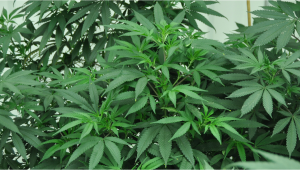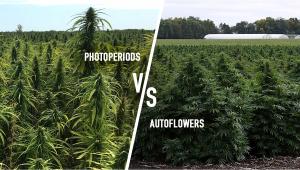Cannabis Cuttings - How to Clone Cannabis From Autoflowering Plants?

- 1. What exactly is meant by cloning cannabis plants?
- 2. Why are marijuana plants cloned?
- 3. How are cannabis plants cloned?
- 4. Can i make clones from autoflowering plants?
- 5. Why can’t you clone autoflowering strains?
- 6. How to achieve amazing results with autos without the need to use clones
- 7. In conclusion
Growing cannabis is extremely interesting because you can experiment in several ways to get the desired outcome. Over the years, cannabis growers have come up with many techniques to increase yields, THC, and even clone plants. Cloning marijuana plants has garnered a lot of attention because it automatically gives you more plants at the same cost.
Ultimately, cannabis growers have two choices when it comes to growing the herb. They can either start off with seeds or create a new plant by taking a cutting from an existing one, otherwise known as cloning. Most home growers choose to start from seeds for various reasons. For one, it’s much easier and less conspicuous to receive seeds in the mail. Plus, seeds are legal in many countries, whereas clones—as live cannabis plant material—are not. But the differences don’t stop there. Cannabis seeds of the same strain will produce plants that are genetically similar, but not identical. Specimens of the same generation that descend from the same parents will display variations in height, growing speed, productivity, and even cannabinoid content. While hobbyist growers don’t care too much about slight genetic variation, it’s an important problem that commercial growers and breeders are constantly striving to overcome. As an exact genetic copy of a mother plant, clones are a great way to sidestep this issue.
Generally, cloning is associated with photoperiod plants, but some artistic growers have experimented even with autoflowers. But, have they been successful? Before we get to the answers, it’s important to understand the essence of cloning, so you can try it with your own autoflowers. So, let’s begin, shall we?
1. What exactly is meant by cloning cannabis plants?
Cloning is nothing but a method of propagating or producing more cannabis plants from one single mother plant. This technique is performed because of the asexual reproduction of your beloved cannabis plant. Once the plant reaches a certain size, a healthy cutting is taken from the parent plant so that the cutting develops roots of its own and develops into another plant. Cloning is a sure-shot way to ensure that you replicate the mother plant. So, why can’t I simply sow seeds of the mother plant to replicate it, you ask? Well, although planting seeds can give you some of the genetics of the parent plant, cloning guarantees that you get the exact replica with absolutely no changes.
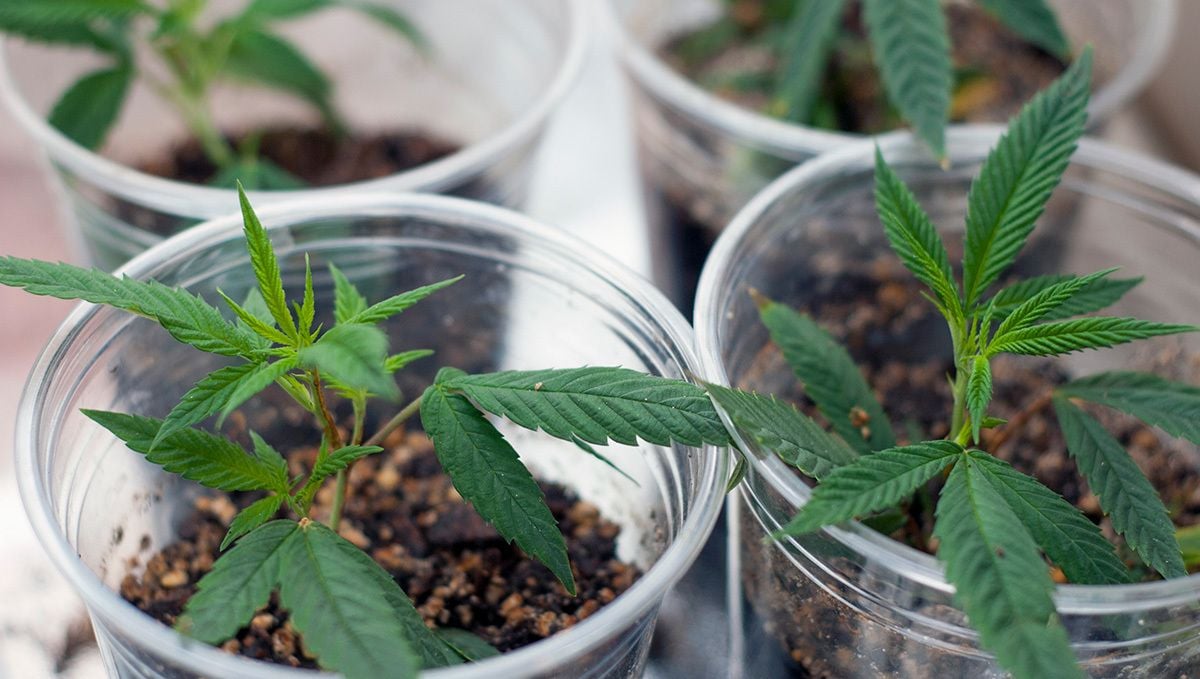
Cloning is nothing but the process of producing an exact copy of a cannabis plant. In other words, you cut off a little part of the plant, and the cutting grows into another plant while resembling the mother plant. So, for example, if you like Green Crack because of its awesomeness, a clone will give you another Green Crack plant without burning a hole in your pocket. This means that even if you have one single plant, you can get as many clones as you want by taking cuttings. The cutting will have the same genes, sex, and characteristics as the mother.
But not all Green Crack plants are the same. Sow 10 seeds, and you’ll watch 10 slightly different versions of this strain develop before your eyes. It might take some thorough analysis, but look closely enough and you’ll discover 10 different phenotypes. Cloning comes in handy to growers and breeders because it enables them to identify phenotypes with traits that they desire, and directly replicate them through the simple process of taking a cutting. Ultimately, cloning enables growers to copy and paste the genetics that appeals to them the most, without risking losing traits or having to work hard to find them again, as with seed cultivation.
2. Why are marijuana plants cloned?
There’s no point in cloning mother plants if you don’t understand why they are cloned in the first place. There are several benefits to cloning your favorite strains:
- You get more plants without having to spend money on seeds
- You get the exact genetics of your favorite strains
- You can produce large quantities of plants and thus increase yields
- You can eliminate male plants by cloning only female plants
Generally, a new clone or cutting will grow just like the mother. After the buds are harvested and dried and cured, the smoke will also taste like the mother plant. However, in some cases, there may be slight differences owing to the nutrients, growing medium, and even the way the buds are dried and cured. However, growers can achieve identical results by exposing the clone to the exact same environmental conditions as the mother plant. The process of cloning also speeds up the growing process. You don’t have to spend weeks germinating seeds and raising them through the delicate seedling phase. Instead, once their roots are formed properly, you’ll start from the vegetative phase. This quick process allows cultivators to rapidly gain copies of a mother plant, without having to deal with inconsistent germination or phenohunting later down the line.
Of all of the benefits of cloning cannabis plants, genetic stability reigns supreme. Every time a grower germinates a seed, they facilitate the creation of unique cannabis plants. Sure, it will look very similar to other specimens of the same strains, especially those of the same generation of progeny. However, it’s genetically different from every single cannabis plant that existed before it, as well as all of those that will exist until the end of time. Just like every human being you know, every cannabis plant you’ll ever grow will possess its own special genetic code. Some cannabis plants are tall giants, whereas others are bushy and short. However, the differences between some plants are much harder to detect, at least while they’re growing. These include trichome density, flavor, terpene profile, cannabinoid profile, flavonoid content, and the exact subjective effects of the high.
Sometimes, a strain will come along and make such an impact that it gains world recognition. Something about its aroma, taste, effect, and even history will make it become a classic. Some of the most famous strains alive today are maintained largely through cloning. This allows cultivators to receive an exact genetic copy of the variety in question—not a knock-off version in seed form that doesn’t live up to the same standard. So, to put it simply, clones help to push back against the genetic variability in cannabis plants. While this trait enables us to experience a diversity of effects, aromas, and plant structures, it also means some superb genetics are only transient flashes of experience in the world of weed. The art and science of cloning allow growers to hold on to these superstar strains for years at a time.
3. How are cannabis plants cloned?
Like most other plants, marijuana plants can be cloned as well. Whether it’s due to the parent plant producing high yields, THC, a perfect aroma and taste, or even because of the high, mother plants are cloned. The only thing to remember is that the cutting must be taken only when the plant is in the vegetative or growing stage. With a photoperiod strain, you simply wait until the plant grows a bit. After you sow the seed, you need to wait at least 3-4 weeks for the seedling to do its thing. The plant must have a few branches that can develop into other plants on their own.
At this point, use a sharp pair of scissors to take a cutting. I repeat again that it’s imperative to take a cutting only when the plant is in the vegetative stage. Of course, you can clone even when it’s in the flowering stage, but it won’t be very successful. This is because the plant stops growing much once it enters the flowering stage. It will put all its energy into growing beautiful buds and cloning at this stage will produce a plant that won’t have enough time to grow. Due to inadequate growth, the plant will produce very few buds. And, the result will be a small, stunted plant with almost no yield.
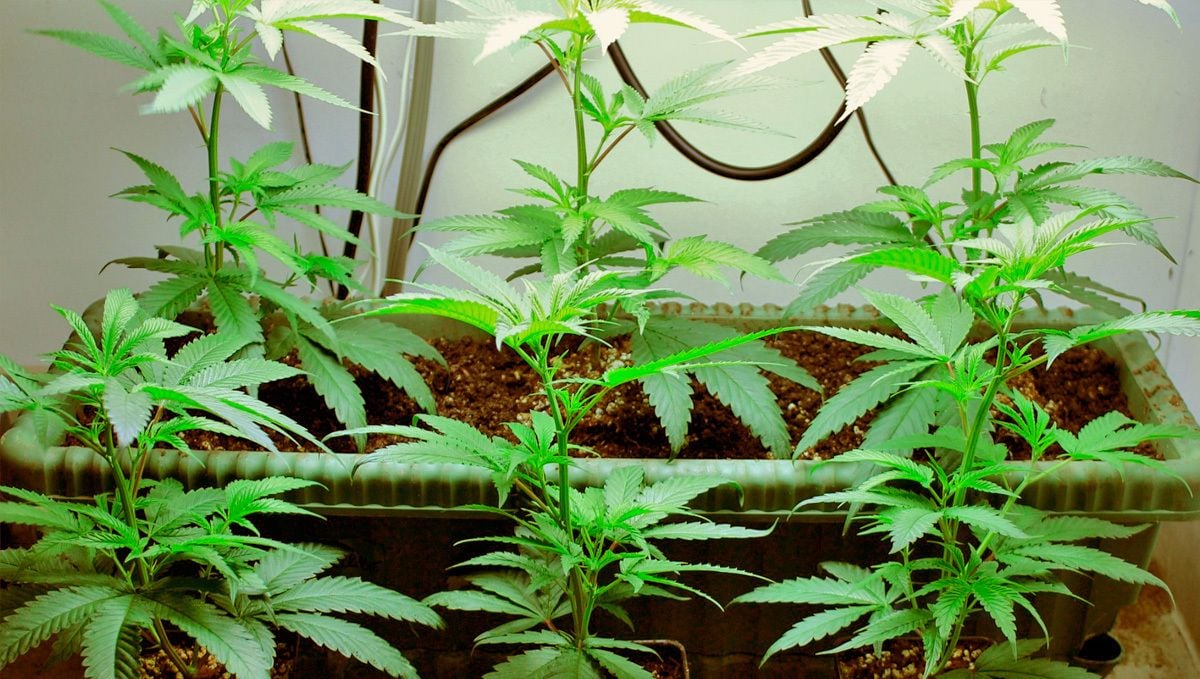
So, for the process of cloning, you choose a healthy female. It needs to be about 4 weeks at least. It must also possess 4-6 nodes for you to take cuttings. You must ensure that it receives a minimum of 18 hours of light to prevent it from entering the flowering stage. Photoperiod strains start flowering when they get 12 hours of darkness, so make sure that it gets proper lighting to prevent flowering. You can allow the mother plant to grow and flower if you don’t need any more cuttings. However, if you wish to get more, it can continue to grow in the vegetative stage as long as you want more clones.
Some growers let the mother plants grow and flower to produce buds. They take cuttings from the clones later when they develop into bigger plants. Also, remember to label the plants if you’re taking cloning several plants to prevent confusion. Once a cutting is taken from the mother plant, it is dipped in a rooting hormone powder or solution. The cutting is then placed in a seedling tray with some soil. It’s important to cover the cuttings with some sort of a dome so that it develops roots. Don’t place them in complete darkness, though. Partial light is best for them to get some roots. After the roots grow a bit, you can introduce them to artificial light or sunlight and they will grow normally like any other cannabis plant. Cloning is perfect for photoperiod strains, but the question is if the same applies to autoflowering plants.
4. Can I make clones from autoflowering plants?
Autoflowers are different compared to photoperiod strains. Photoperiod strains start flowering as soon as they are introduced to a 12/12 cycle of light/darkness. However, autoflowering strains will start flowering irrespective of the light provided. In simple terms, autoflowers have a preset cycle and they will start flowering within just 3-4 weeks of growth. Like photoperiod plants, autoflowers can be cloned as well. But, will the clones develop into other plants? Will the cloning will successful? That’s another question altogether. It’s not impossible to clone autoflowering strains. They are normal plants just like other cannabis plants. But, the problem is that growers are rarely successful in cloning them. This is because of the way autoflowers grow. The science of cloning is pretty simple. Cuttings taken from the mother plant grow are rooted so they can grow into new plants.
But, it’s different with autoflowers only because of genetics. Autoflowers come under the Ruderalis species of cannabis. They are popular because they are the fastest to flower. They have a different timeline when compared to Sativa and Indica. In the wild, Ruderalis varieties adapted to the harshest of weather conditions. While photoperiod cannabis growers need to wait a minimum of 5-6 months for their plants to grow, flower, and produce buds, autoflowers finish their cycle within 3 months. Awesome, right? Yep, they are amazing and can produce two batches of harvest in the time taken to produce one batch of photoperiod strains. However, it is due to this very reason that you can’t clone autoflowers successfully.
5. Why can’t you clone autoflowering strains?
Autoflowers have many benefits. Many growers specifically look for autoflowers when they purchase seeds because they are fast, produce great yields, and have a high content of THC as well. But, among the many advantages, the only disadvantage is that it’s not very receptive to cloning. Since they don’t have a specific timeline to trigger flowering, it’s not possible to manipulate them. Now, with cloning, you need to cut a specific branch and dip it in a rooting solution. The cutting will develop roots on its own and grow into another big, beautiful plant.
All this process takes time, though. Photoperiod strains will start flowering only when they get 12 hours of darkness, just like in the wild. When cannabis plants realize that the periods of darkness are increasing, they start flowering. Obviously, you can manipulate the plant to grow as long as you want by providing 18 hours of light. But, with autoflowers, you don’t have time. You don’t have the luxury of manipulating the growing or vegetative period because the plant will start flowering even if you provide 24 hours of light. For instance, let’s say you sow an autoflower seed. You wait a bit until the plant produces a few nodes. You see that the plant has several nodes to grow into other plants.
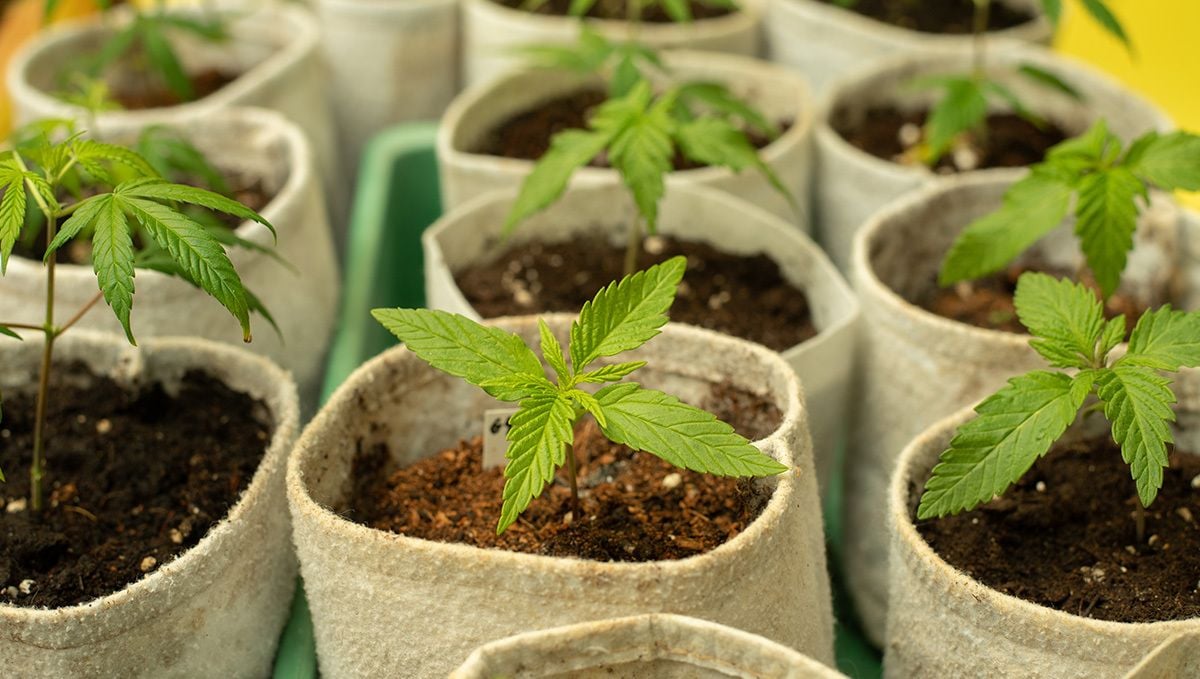
Imagine that you take a cutting. Or, maybe you can actually try this because it becomes even easier to understand why you can’t clone autos effectively. So, now you dip the cutting in a rooting solution and wait for it to develop roots. Meanwhile, the mother plant continues to grow and starts flowering. Remember that the clone will perform exactly like the mother. So, the cutting is also in the flowering stage. And before it can even grow, it will start flowering. In this process, you’ll be left with a small plant that has no time to develop proper roots either. With autoflowers, timing is everything, and since cloning requires time, it’s not possible to clone autoflowers.
What if I take the clone when the plant is just 2 weeks old, you ask? Well, the plant is too small to take a cutting. Firstly, you’d end up with a small cutting that probably won’t grow, but what’s worse is that you’d be hindering the mother plant’s growth too. Even if you clone an autoflowering plant that’s already flowering, you’ll have stunted plants. If you love growing autoflowers, however, hope is not lost. You can’t clone them but that’s the only disadvantage. Instead of trying to clone them, you can plant several seeds and still get a high yield.
Remember that even clones of photoperiod strains need 5-6 months to complete their cycle. Autoflowers are super fast, so you can still enjoy great yields at a quick pace. The point of growing marijuana is to harvest and smoke them as soon as possible, so autoflowers are simply perfect to achieve your desired outcome even if they can’t be cloned. The sheer speed and resilience of autoflowering strains make up for the inability to clone them. Because they grow so fast, cultivators and breeders can cruise through the phenohunting process much quicker than they can with photoperiod varieties. Sure, genetic variability means you won’t create a genetically identical specimen in the future. However, you can come extremely close using breeding techniques such as backcrossing.
6. How to Achieve Amazing Results With Autos Without the Need to Use Clones
Ok, so we have explained exactly why autoflowering cannabis strains do not work for cloning. And we have also discussed why, thanks to the shortened lifecycle timing, autos can be grown from seed to harvest in a quick period and remove the need for cloning in the first place. But, what is the best way to grow autos and have an endless supply of top-quality nugs? With autoflowering cannabis strains, it is extremely easy to set up a perpetual harvest routine. Hold up, what exactly is a perpetual harvest routine? Well, simply put, it’s where you stagger then germination so you harvest a couple of plants at set intervals, meaning a neverending supply of fresh sticky-icky.
Ok, but why are autos perfect for a perpetual harvest setup?
It really comes down to their lighting requirements, size, and ease of growing. Unlike photoperiod plants, autos will “automatically” switch from the vegetative growth stage to the flowering producing stage no matter what light schedule they are grown under. This makes setting up a perpetual harvest super simple, as plants of any age can be grown under the same lighting periods. Most auto growers keep their plants under 18/6, 20/4, or even 24/0 (light/dark) for the entire life cycle. This allows for seedling, vegging plants, and flowering bushes to all be in the same grow room at the same time.
Don’t different stages of growth call for different light spectrums?
Look, that is correct, but with LED panels slowly overtaking HID rigs as the gold standard for lighting indoor gardens this is becoming easier and easier to control. These days all the high-quality LED panels come with a slider or knob to control the light spectrum, and there is nothing at all wrong with using an MH bulb in one part of your grow room with an HPS in another, as long as they are on the same timing. So, what’s the best way to start a perpetual growth routine?
Well, that is really up to you, how often you would like to harvest, and your needs. Let’s break it down quickly. Autos usually take anywhere between 9 to 10 weeks from seed to harvest (with some exceptions - Sativa dominant plants will usually take a little longer). So, you start 4 plants and let them grow for 3 weeks before you germinate the next crop. It will take at least 1 full week from the beginning of germination for the seeds to turn into proper seedlings, so once this happens the original crop is a month old and just switching over to flower.
Then, 3 weeks later you start the third set of seeds and repeat the pattern. Once this third set is ready to switch over to flower the first set should be well and truly finished. For this 4 to 5 plant per set system you are probably going to want to use a tent or space that is at minimum 2m long x 1.5m wide x 1.8 m tall to allow for the plants the space to grow into the beasts you are hoping for!
7. In Conclusion
If you have made it this far you should now be all clued up as to why autos don’t really work with a cloning routine, but why they don’t really need to. Thanks to the short lifecycle and the lighting needs of autoflowering cannabis strains, you can simply grow from seed to harvest without ever having to worry about looking after a mother plant and going through the cloning process. Just chuck the seeds in the ground and let the genetics do all the hard work for you!







